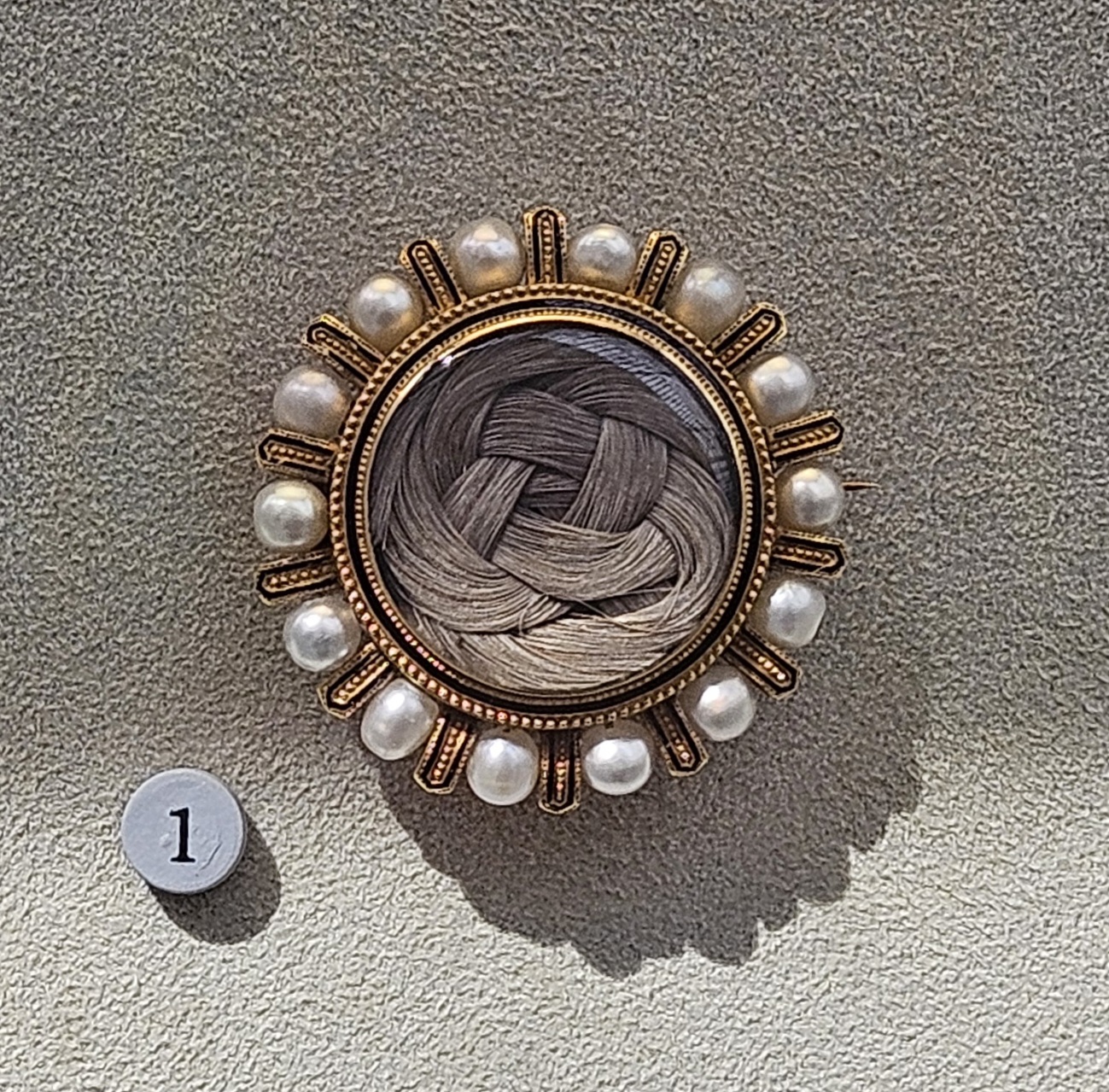
Brooch
Tiffany & Co.
American — 1868
This small brooch houses a lock of hair belonging, per its inscription, to Cornelia Ray Hamilton, who died at age 38 in 1867, a month before this completed brooch was presented to its intended owner. The use of hair in mourning jewellery was common in nineteenth-century America, and descended from an earlier practice of being buried with a loved one’s hair in order to guarantee reuniting on Judgement Day.
No provenance information is available for this piece beyond the record of purchase by the museum, so we do not know how its owner (or their mother) knew Cornelia Ray Hamilton. But we do know that they took the time to hand write a label identifying the piece, that they kept it in fine condition and in its original housing, and that - thanks to this label - they received it as a gift only a month after Cornelia’s passing. While we know nothing of Cornelia or the person who received her hair, this limited information is nonetheless enough to construct an image of a mother seeking to comfort her child in their grief through an intimate gift, allowing the bereaved to keep the deceased - literally - close to their heart.
Alternatively, beneath the sentimentality there is also an undercurrent of social obligation to this piece. Mourning in nineteenth-century America was a deeply gendered process, and - depending on the degree of relation to the deceased - women could be expected to spend upwards of two years in active, visible and public mourning, both in behaviour and dress. The style of this brooch indicates it was to be worn by a woman, and the expensive materials and Tiffany pedigree indicate that she would have been a woman of means. For upper class women of this time, their role in society was their profession, and it was a demanding one, requiring exacting conformity to expected roles and responsibilities in addition to the development of social and domestic skills. This piece’s position as a gift from a mother to a daughter might be born of a genuine desire to help a loved one tackle grief, but it might just as well represent an enforcement of gender and class roles upon someone who did not particularly care for the deceased.
Bibliography
- D. Tulla Lightfoot. (2019). Artists Working in Hair. In The Culture and Art of Death in 19th Century America. McFarland.
- Brean, D. R. (2019). Memory and Mourning: Death in the Gilded Age. The Frick Pittsburgh. https://www.thefrickpittsburgh.org/Story-Memory-and-Mourning-Death-in-the-Gilded-Age
- Holm, C. (2004). Sentimental Cuts: Eighteenth-Century Mourning Jewelry with Hair. Eighteenth-Century Studies, 38(1), 139–143.